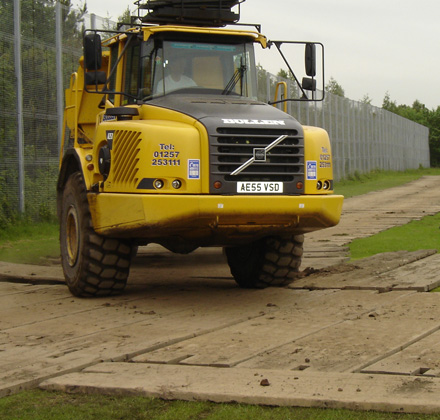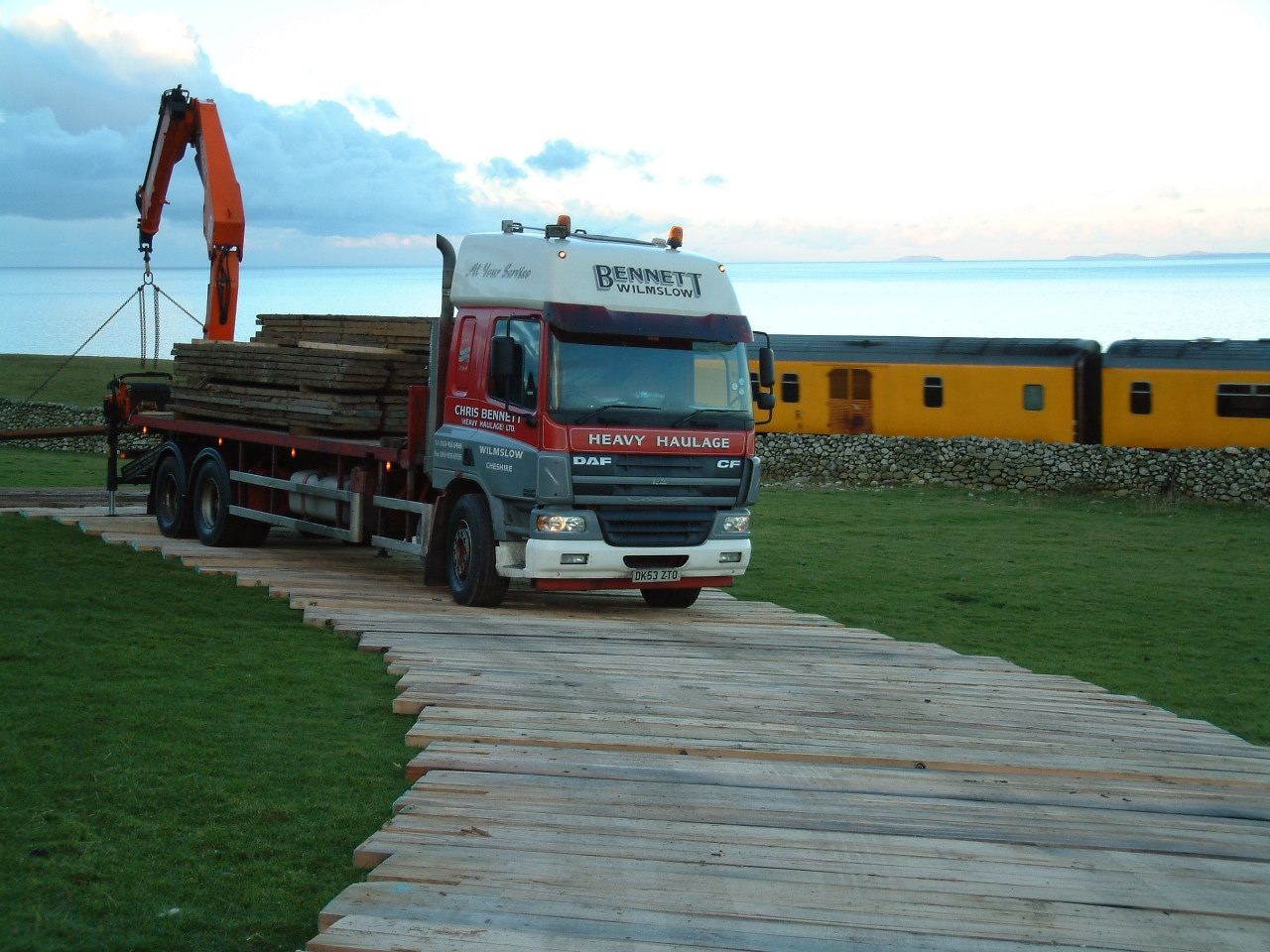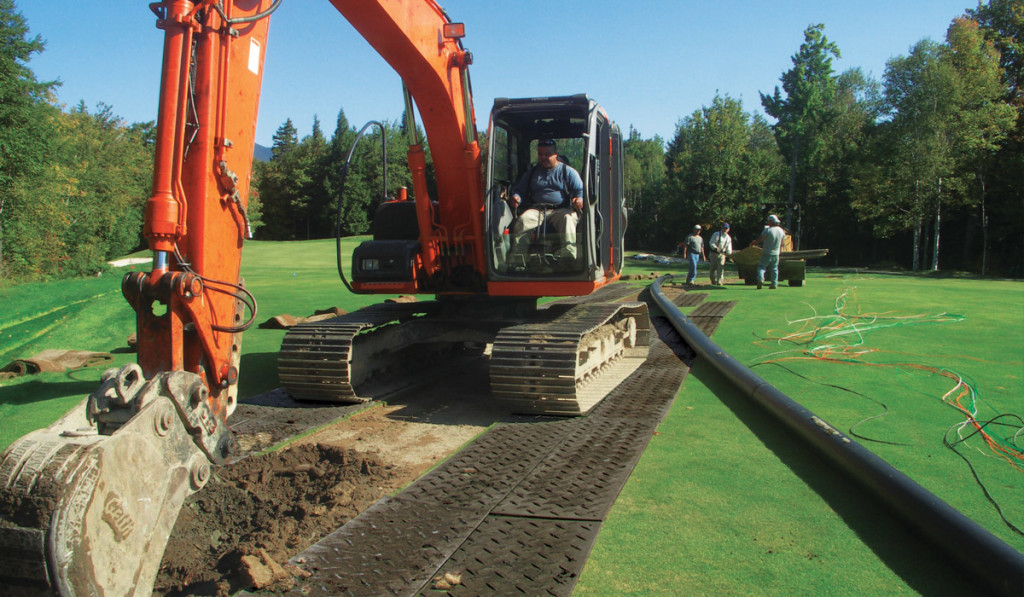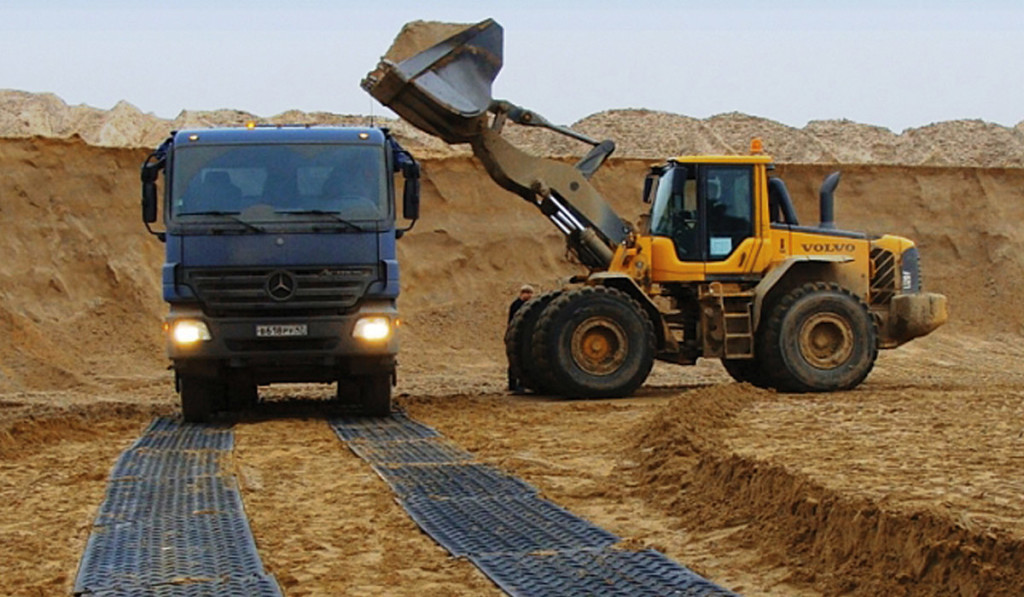Ground protection mats can be used to create temporary roadways and trackways, safe site access routes, staging areas and working platforms, as well as protecting the ground itself against falling objects.
Timbermat’s range of ground protection mats includes durable, anti-slip mats in a variety of materials, giving you choice and flexibility to suit your construction site or outdoor event location.


European Delivery

Next Day UK Delivery
25 Years Experience
All Sizes Available
Key Features of Ground Protection Mats
Overview of Ground Protection Mats
-
- Ground protection mats are essential tools used to safeguard ground surfaces from damage due to heavy machinery, foot traffic, and environmental factors.
- Commonly utilised in industries such as construction, landscaping, and event planning, these mats help maintain the integrity of the underlying ground.
What are Ground Protection Mats?
-
Definition and Purpose
- Ground protection mats are durable, portable surfaces typically made from High-Density Polyethylene (HDPE) or similar materials.
- They are designed to distribute weight evenly, preventing ground compaction and damage.
-
Types of Ground Protection Mats
- Heavy-duty mats: Suitable for supporting heavy machinery and vehicles.
- Light-duty mats: Ideal for pedestrian pathways and smaller equipment.
- Specialised mats: Designed for specific applications, such as crane operations and event flooring.
Benefits of Using Ground Protection Mats
-
Ground Damage Prevention
- Protect lawns, turf, and sensitive surfaces from the impact of heavy equipment.
-
Safety Enhancement
- Provide stable, non-slip surfaces, reducing the risk of accidents for both equipment operators and pedestrians.
-
Cost-Effectiveness
- Long-term savings by minimising the need for ground repairs.
- Reusable nature of the mats ensures they can be used for multiple projects over time.
Materials and Construction
-
Common Materials Used
- High-Density Polyethylene (HDPE): Known for its strength, durability, and environmental resistance.
- Composite materials: Often used to enhance durability and load-bearing capacity.
- Rubber-infused mats: Provide additional grip and flexibility.
-
Durability and Design Features
- UV Resistance: Prevents degradation from prolonged sun exposure.
- Weight Capacity: Varies depending on the type, with some mats supporting loads up to 80 tons.
- Tread Patterns: Designed for optimal traction, with options like chevron, diamond cleat, and pedestrian-friendly textures.
Applications of Ground Protection Mats
-
Construction Sites
- Facilitate the movement of heavy machinery.
- Protect staging areas and prevent ground rutting.
-
Landscaping and Arboriculture
- Safeguard grass and delicate landscapes from equipment damage.
- Useful in tree cutting and other horticultural activities.
-
Events and Temporary Roadways
- Create stable, non-damaging surfaces for pedestrian traffic and temporary vehicle access.
-
Oil, Gas, and Utilities
- Essential in pipeline construction, utility work, and environmental containment efforts.
How to Choose the Right Ground Protection Mats
- Assessing Ground Conditions
- Consider the type of ground (e.g., soft, uneven) and load requirements when selecting mats.
- Weight and Load Capacity
- Ensure the mats can support the weight of the equipment and vehicles to be used on them.
- Size and Portability
- Choose mat sizes that are easy to transport and install based on project needs.
- Connector Options
- Utilise over-mount and under-mount connectors for stability on uneven ground and long-term use.
Installation and Maintenance Tips
- Proper Installation Techniques
- Lay out mats systematically and secure them with appropriate connectors to ensure stability.
- Avoid overlapping mats to prevent shifting during use.
- Maintenance Practices
- Regularly clean mats to remove debris and prevent buildup.
- Store mats in a dry, shaded area to prolong their lifespan.
- Common Mistakes to Avoid
- Incorrect placement can lead to mat shifting and ground damage.
- Overloading mats beyond their specified capacity can cause breakage and reduce effectiveness.
Applications of Ground Protection Mats
- Construction Sites
- Facilitate the movement of heavy machinery.
- Protect staging areas and prevent ground rutting.
- Landscaping and Arboriculture
- Safeguard grass and delicate landscapes from equipment damage.
- Useful in tree cutting and other horticultural activities.
- Events and Temporary Roadways
- Create stable, non-damaging surfaces for pedestrian traffic and temporary vehicle access.
- Oil, Gas, and Utilities
- Essential in pipeline construction, utility work, and environmental containment efforts.
How to Choose the Right Ground Protection Mats
- Assessing Ground Conditions
- Consider the type of ground (e.g., soft, uneven) and load requirements when selecting mats.
- Weight and Load Capacity
- Ensure the mats can support the weight of the equipment and vehicles to be used on them.
- Size and Portability
- Choose mat sizes that are easy to transport and install based on project needs.
- Connector Options
- Utilise over-mount and under-mount connectors for stability on uneven ground and long-term use.
Installation and Maintenance Tips
- Proper Installation Techniques
- Lay out mats systematically and secure them with appropriate connectors to ensure stability.
- Avoid overlapping mats to prevent shifting during use.
- Maintenance Practices
- Regularly clean mats to remove debris and prevent buildup.
- Store mats in a dry, shaded area to prolong their lifespan.
- Common Mistakes to Avoid
- Incorrect placement can lead to mat shifting and ground damage.
- Overloading mats beyond their specified capacity can cause breakage and reduce effectiveness.



